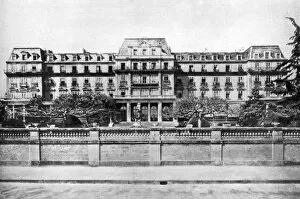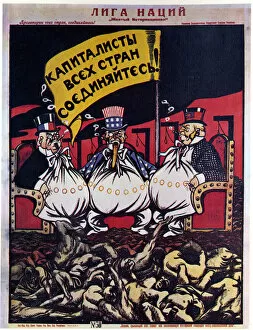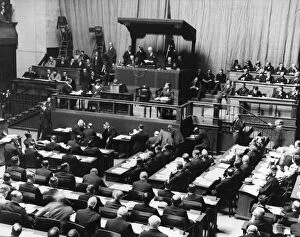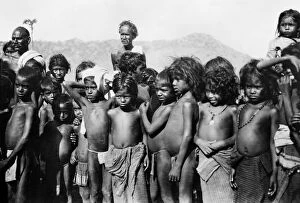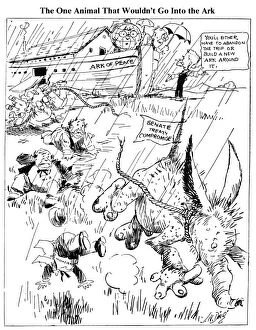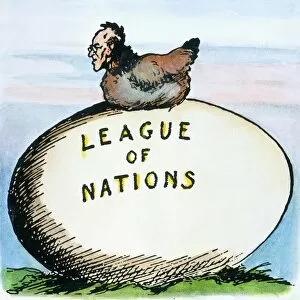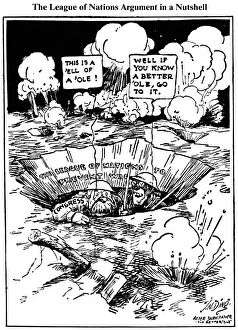League Of Nations Collection (#2)
"League of Nations: A Bubble Bursting Dream" In the aftermath of World War I, a glimmer of hope emerged in the form of the League of Nations
For sale as Licensed Images
Choose your image, Select your licence and Download the media
"League of Nations: A Bubble Bursting Dream" In the aftermath of World War I, a glimmer of hope emerged in the form of the League of Nations. Conceived by Woodrow Wilson, this international organization aimed to prevent future conflicts and promote peace among nations. However, as depicted in anonymous artwork titled "Blowing Bubbles, " it seemed like an idealistic notion that could easily burst. The Treaties of Paris in 1919 marked the partitioning of Europe, with unknown creators capturing this significant moment in history through their artwork. The world was divided and fragile, yet there was optimism that the League would bring unity and stability. But satire soon took hold as Russian artist Vladimir Mayakovsky created a poster mocking the League's ineffectiveness. It portrayed a comical scene where being part of this organization meant nothing more than blowing bubbles into thin air – empty promises without substance. Even American cartoons joined in on ridiculing the League's shortcomings. One cartoon humorously questioned what difference it would make if they were actually part of it or not. Skepticism grew as doubts about its efficacy spread. Woodrow Wilson himself, captured in a black-and-white photograph from 1919, had high hopes for his brainchild but faced opposition at home that hindered America's full participation. His vision clashed with political realities. Germany raised its tombstone to symbolize burying the Treaty of Versailles – another blow to faith in international cooperation underpinned by the League. Kladderadatsch's illustration from 1926 showcased Germany's discontentment with these imposed terms. Meanwhile, President Poincare gave an opening address at Quai d'Orsay during the Peace Conference; little did he know that his words would be overshadowed by subsequent disillusionment towards global collaboration efforts. "The lamb from slaughter" ink drawing depicted how smaller nations felt vulnerable within this new framework despite their membership status – questioning the League's ability to protect them from aggression.

